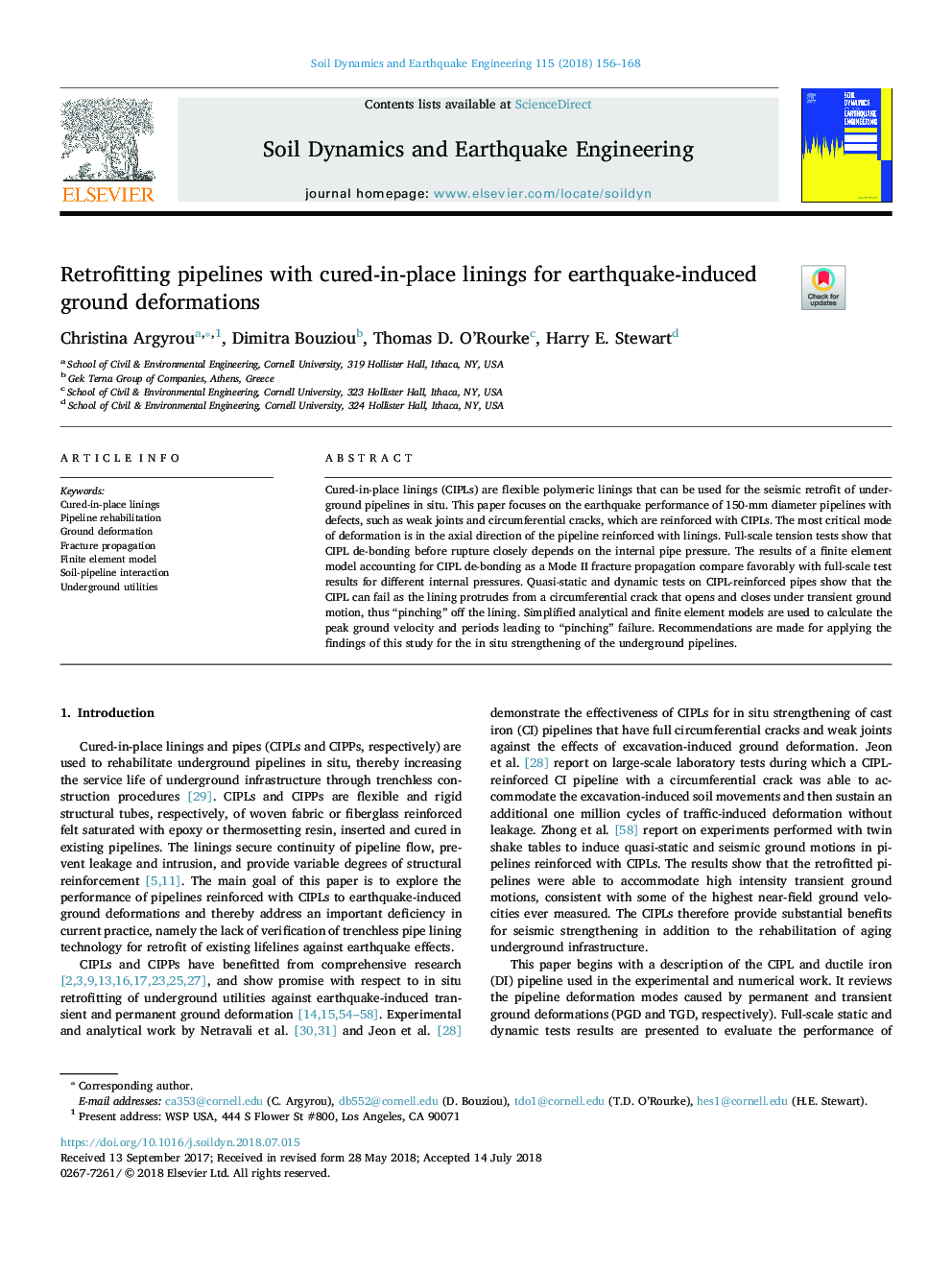| Article ID | Journal | Published Year | Pages | File Type |
|---|---|---|---|---|
| 10132075 | Soil Dynamics and Earthquake Engineering | 2018 | 13 Pages |
Abstract
Cured-in-place linings (CIPLs) are flexible polymeric linings that can be used for the seismic retrofit of underground pipelines in situ. This paper focuses on the earthquake performance of 150-mm diameter pipelines with defects, such as weak joints and circumferential cracks, which are reinforced with CIPLs. The most critical mode of deformation is in the axial direction of the pipeline reinforced with linings. Full-scale tension tests show that CIPL de-bonding before rupture closely depends on the internal pipe pressure. The results of a finite element model accounting for CIPL de-bonding as a Mode II fracture propagation compare favorably with full-scale test results for different internal pressures. Quasi-static and dynamic tests on CIPL-reinforced pipes show that the CIPL can fail as the lining protrudes from a circumferential crack that opens and closes under transient ground motion, thus “pinching” off the lining. Simplified analytical and finite element models are used to calculate the peak ground velocity and periods leading to “pinching” failure. Recommendations are made for applying the findings of this study for the in situ strengthening of the underground pipelines.
Related Topics
Physical Sciences and Engineering
Earth and Planetary Sciences
Geotechnical Engineering and Engineering Geology
Authors
Christina Argyrou, Dimitra Bouziou, Thomas D. O'Rourke, Harry E. Stewart,
